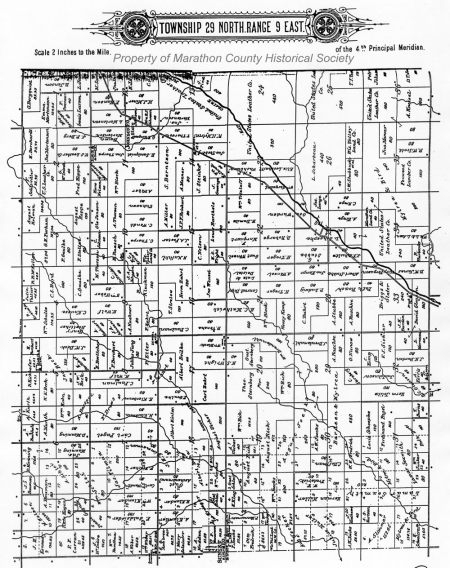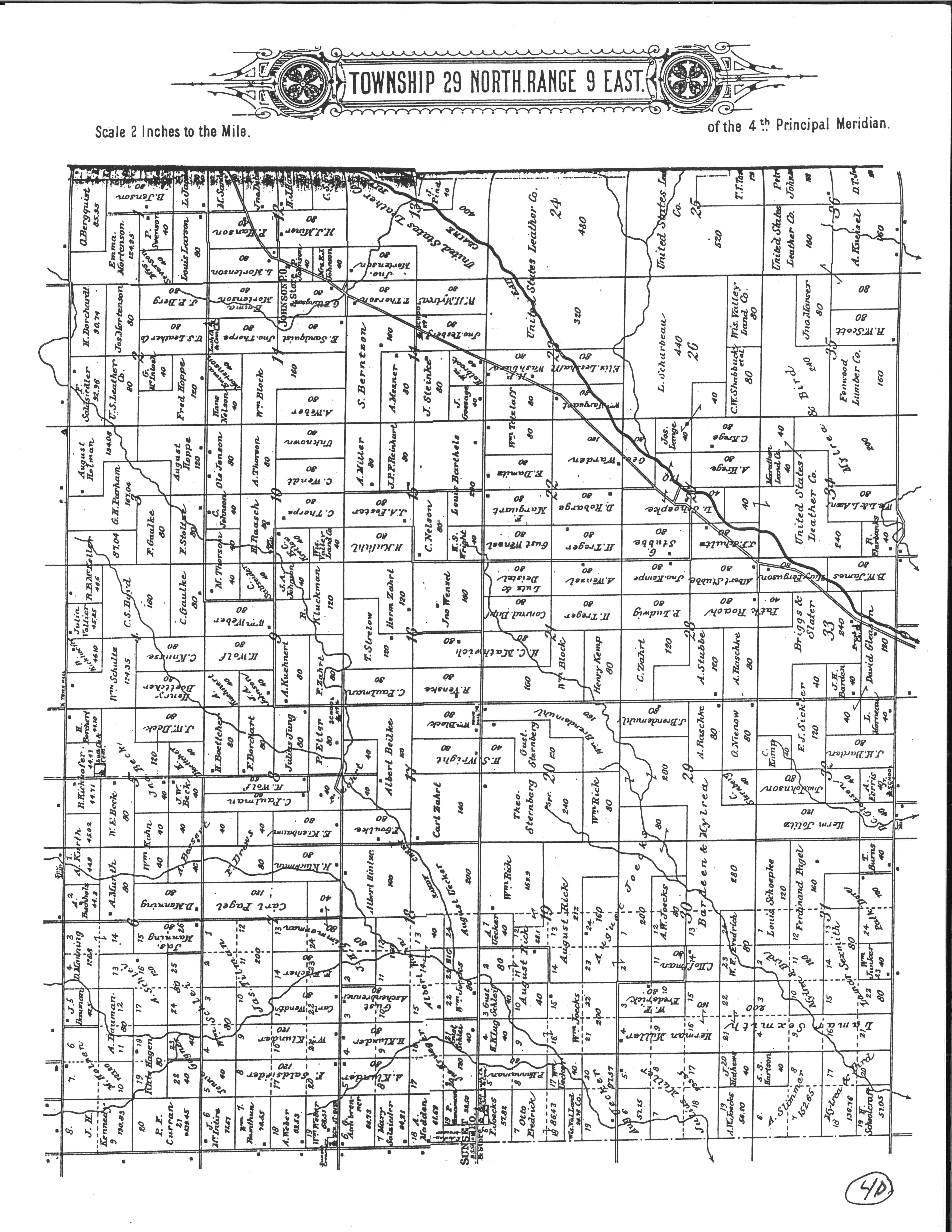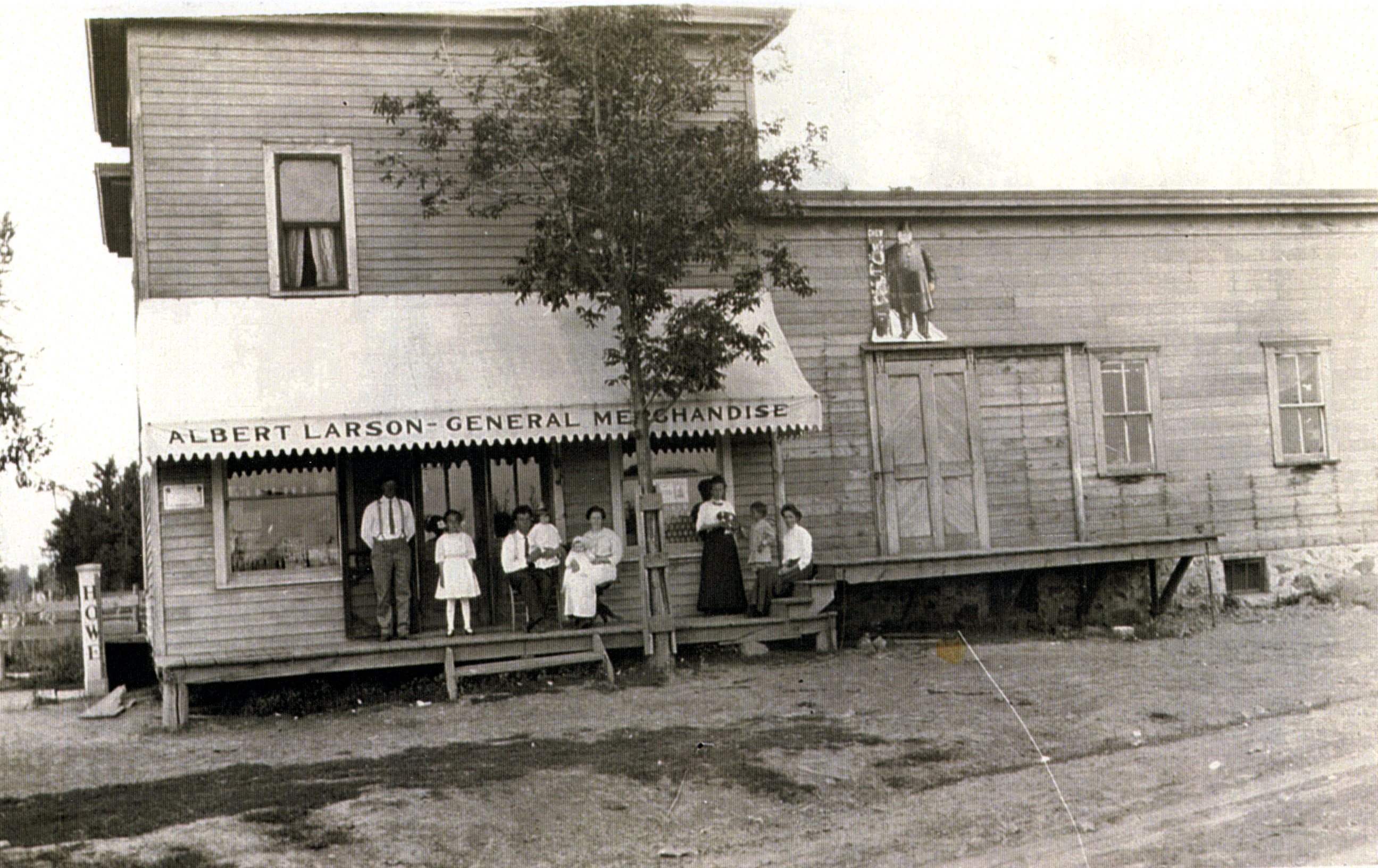Search our Places Database
Easton, Township of
Return To List of Locations | Back to Search
For more information on this location, please contact our research library.

Author:
Mary Moltzan
Location:
T. 29 N. - R. 9 E.
Formallized:
1861
Background:
Population: 1905-864, 2000-1062 Easton reached its present size in 1890.
Indian campgrounds were located along the waterways - particularly the Eau Claire River.
The first farm settlement was made by Dennis Manning and his brother in 1859. Farms were few and far between until the German immigration of 1866. The ethnic trend then became German and Polish.
The area had been part of the Town of Eau Claire. The name was changed to the Town of Weston on Feb. 12 ,1859. It became the Town of Easton on October 24, 1861. This town was abolished in 1865 but reestablished on November 13, 1878. The year 1879 was the first year that records of town meetings were recorded.
First Public Official:
Thomas McCormick
Biography:
Chairman 1879-1881
Post Office Established:
September 22, 1879
First Postmaster:
Schubael D. Knowles
About The Post Office:
1. Hartsville was the first P.O. in the township, located in Sect. 30. The P.O. was discontinued on February 16, 1887.
2. Ottville located in SW 1/4 Sect. 15 opened on December 29, 1896 and closed on April 1,1898 with Emma Thorn as its only postmaster.
3. McKinley 1 was established on October 7, 1892 with Niels Syverson as postmaster. The name was changed to Johnson on April 14, 1894. It was discontinued on March 15, 1905. Location was in Sect. 12.
4.  Mc Kinley 2 was established on December 24, 1902 with Charles W. Phillips as postmaster. It closed on May 14, 1904 with service from Eland in Shawano Co. P.O. location unknown.
See also Villages of Sunset and Johnson.
Railroad:
CM&SP ran north and south through the eastern part of the township beginning in 1906.
Churches:
1. St. John German Evangelical Lutheran Church dates from 1874. In 1887, a brick church was built, Remodeled in 1910, and was used until 1949. Located in NW corner Sect. 19, Sunset.
2. Bethany Norwegian Evangelical Lutheran Church, organized in 1891, was erected before any roads were built.
3. Zion Evangelical Lutheran Church was dedicated on October 25, 1896.
4. New Hope Community Church was built sometime after 1916, and a new church was built in 1941.
5. Presbyterian Church - Sect. 33.
Schools:
1. St. John's Lutheran School was a white frame building built in 1888 for confirmation classes and "summer school". It began as a school in 1915. A school of Ringle red brick was built in 1925. Location - Sunset
2. Zion Evangelical Lutheran School, built in 1915, became a Christian day school in 1929 and closed in 1948.
3. District #4, Sunrise School - located in Sect. 8, established in 1911 and also called Etter School. Earlier, in the late 1880's, a log school was built and called Sunrise School.
4. District #1, Forestville School - Sect. 26. According to a newspaper article, the children called the school Marten School because four families of Martens attended the school. Prior to the school building being condemned, classes through the first year of high school were conducted in the two room, frame structure.
5. District #2, Dewey School - located in Sect. 14.
6. Farewell School, Joint District #3 - located in Sect. 2. During the 1960-61 school year, the students were transported to Dewey. Bethany Lutheran Church then purchased the school and property.
7. Barstow School - District #6
8. Joint School # 1 - located in Section 32
9. School # 4 - located in Section 8
10. In the 1901 Marathon County Plat Book, an unidentified school is located in Section 7.
Industry:
Cheese factories, logging and sawmills.
There was a goldmine located on River Road, but local lore says it wasn't very profitable.
Farming:
Early crops were raised between stumps of logged-out land. The land was "worked up" with a harrow that was hinged in the middle to make it easier to work around stumps. These harrows were built by a Wausau blacksmith who also built wagons and buggies. Crops raised were potatoes, rutabegas, millet, peas and oats which were cradled by hand. In the late 1890s, binders, mowers and dump rakes came into use. About 1900, a Deering and McCormik mower sold for $45.00 and binder for $125.00.
Machinery was generally sold by an agent who came to the farm with a horse and buggy. When a delivery was made, he came with a team and wagon and assembled the machinery on the farm.
As dairy farming became the major industry, cheese factories replaced sawmills.
Stories:
Jacob and John Beck came to the area in 1882 and purchased adjoining 40s in 1883. Another brother, William, came later and purchased land next to John's. Jacob and John built a shanty which was home until they could build log houses and log barns. The land was heavily forested, so they cleared the land and hauled the pine logs with oxen to Burns sawmill. These logs were used for building purposes while the remaining logs of maple, oak, and elm were put on piles and burned. Necessary supplies were obtained by walking to Wausau or Stevens Point. To get their mail they walked to the P.O. in Nutterville. In the 1890s, families strived to raise all their food, buying only flour, sugar, salt, and pepper. The diet consisted of milk, milk by-products, fruits, vegetables and the meat the family butchered. All were used. Apples were packed in the hay mow for a period of "mellowing" and moved into the basement when freezing weather arrived. Salted herring was also popular. Some families couldn't afford coffee, so they made a home brew called "pea coffee" by roasting barley and peas.



